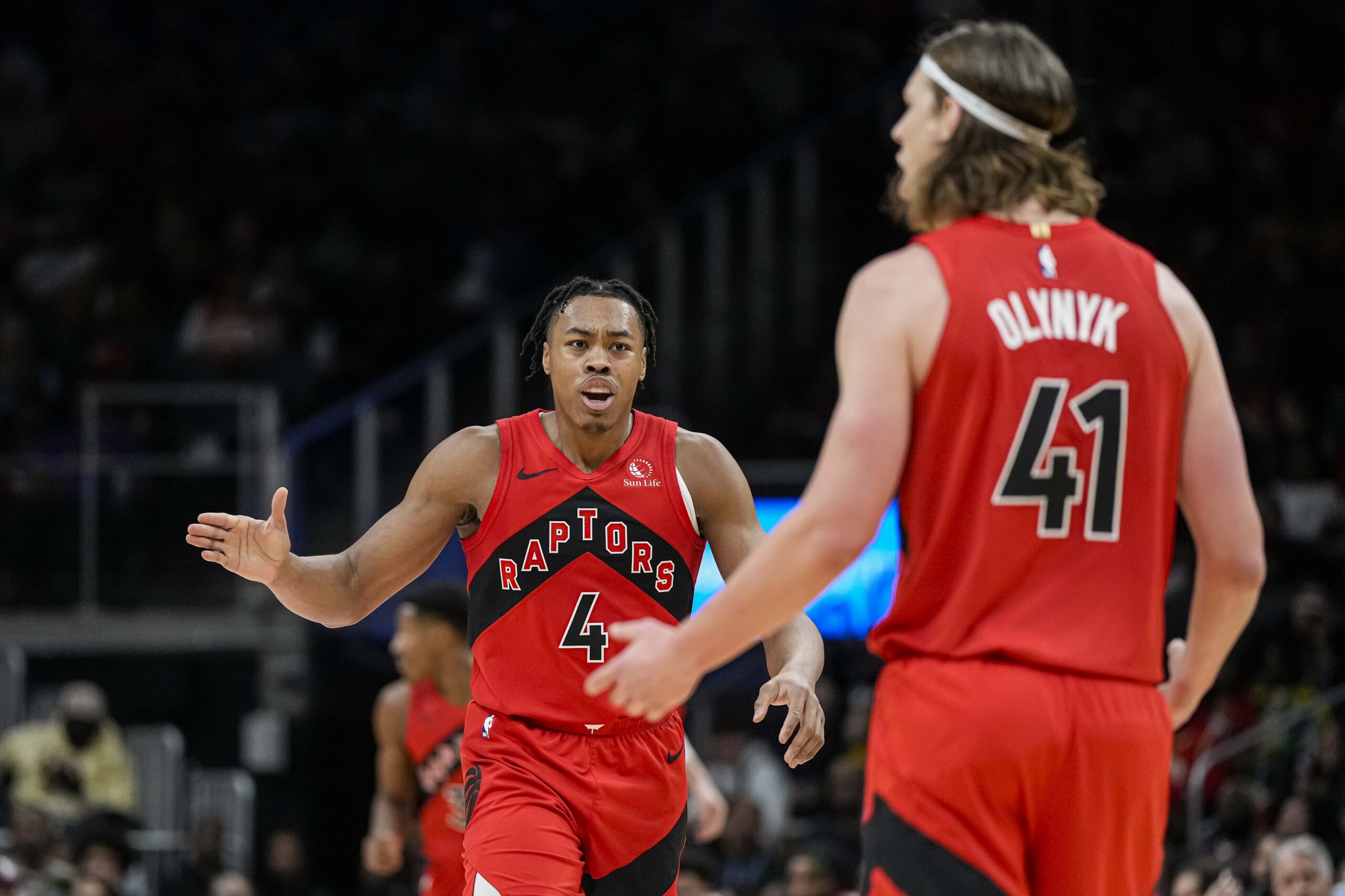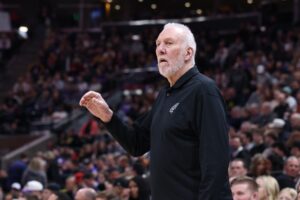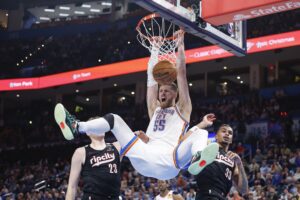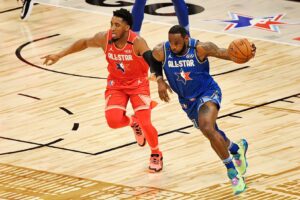The Toronto Raptors find themselves in a favorable position, equipped with a cache of assets that gives them the luxury to experiment and evaluate their roster. Armed with all their future first-round draft picks and an additional one from the Indiana Pacers in the Pascal Siakam trade, the Raptors have the flexibility to make moves at their own pace. This advantage, along with tradeable contracts and a developing roster, enables the team to be patient and methodical in crafting a future contender.
NBA Business: Tradeable Assets Give The Toronto Raptors Flexibility
Raptors Trade Assets: Flexibility and Leverage
The Raptors’ situation is enhanced by several valuable tradeable contracts. Bruce Brown’s expiring deal offers flexibility. As a versatile guard/forward with playoff experience, Brown could be an enticing piece for teams looking to add depth. Likewise, Chris Boucher’s expiring contract provides Toronto with another opportunity to shed salary or include him in a larger trade to land a star or a high-upside talent.
One of the Raptors’ most intriguing trade assets is RJ Barrett. Acquired after the OG Anunoby trade, Barrett quickly became a crucial piece for the Raptors, averaging 21.8 points, 6.4 rebounds, and 4.1 assists over 32 games. With three years left on his four-year, $120 million rookie-scale extension, Barrett’s contract represents a significant value as the NBA salary cap rises. His contract, which accounts for just over 18% of the current salary cap, will occupy a smaller percentage as the cap increases, making him even more attractive to potential trade partners down the line. Barrett’s all-around ability as a forward who can score, rebound, and facilitate adds to his appeal, allowing the Raptors to hold off on making an immediate decision about his future. Thanks to their stockpile of draft picks, they can afford to let this core develop before deciding on their long-term direction.
Experimenting with Quickley and Barnes
The Raptors also have the luxury to experiment with their ball-handlers, led by Immanuel Quickley and Scottie Barnes. Both players bring complementary skills to the table, but in today’s NBA, the value of size at the point guard position can’t be understated. While Quickley has okay size for a combo guard at six-foot-two, he isn’t tall enough to consistently see over defenses, which necessitates sharing ball-handling duties with the six-foot-seven Barnes. This dynamic presents the Raptors with an interesting challenge of staggering their minutes to optimize the strengths of both players while ensuring the team maintains cohesion on both ends of the floor.
Because the Raptors are not in a rush to contend immediately, they can afford to test different rotations and combinations between Quickley and Barnes. Staggering their minutes might unlock an effective on-court balance, where Barnes can function as a primary playmaker in certain lineups, while Quickley operates as the lead guard in others. This strategy fits into their retooling year—a season where the team can remain competitive while allowing themselves the freedom to tweak the roster if they start strong in the early parts of the season.
The Value of Draft Picks in Recent Moves
Toronto’s ability to explore options extends beyond just their core players. Their trade deadline acquisition of Kelly Olynyk and Ochai Agbaji is an excellent example of how their draft pick cache allows them to take calculated risks. In February, the Raptors sent Kira Lewis Jr., Otto Porter Jr., and a 2024 first-round pick (acquired in the Siakam trade) to the Utah Jazz in exchange for Olynyk and Agbaji. Olynyk, known for his high basketball IQ and ability to make plays off handoffs and drives, fits seamlessly into head coach Darko Rajaković’s system. This move wouldn’t have been possible without the Raptors’ abundance of draft capital, which allowed them to pull the trigger on a medium-risk deal that could pay dividends in the short term while maintaining their long-term flexibility.
The Raptors’ core isn’t a finished product, and their willingness to take calculated risks with trades like the Olynyk acquisition demonstrates their forward-thinking approach. With an array of assets, the team has the freedom to take swings on players who might complement their existing core while retaining the option to pivot in the future if needed.
The Last Word
As the 2024-25 season progresses, the Raptors have the luxury of time. Their wealth of draft picks and attractive tradeable contracts position them to be active players on the trade market. They can choose to push all-in on this current roster or pivot toward a more radical retooling if the season doesn’t go according to plan. Either way, the Raptors have equipped themselves with the flexibility to act when the moment is right.
With Barrett developing into a valuable asset, Quickley and Barnes offering versatility as ball-handlers, and tradeable contracts like those of Brown and Boucher in hand, the Raptors are well-positioned to explore multiple avenues of team-building. Their future first-round picks provide a cushion that allows them to try different combinations and strategies without the pressure of immediate results. If the roster clicks, they can ride the momentum into playoff contention. If not, the Raptors have the flexibility to retool and rebuild with their draft assets.






